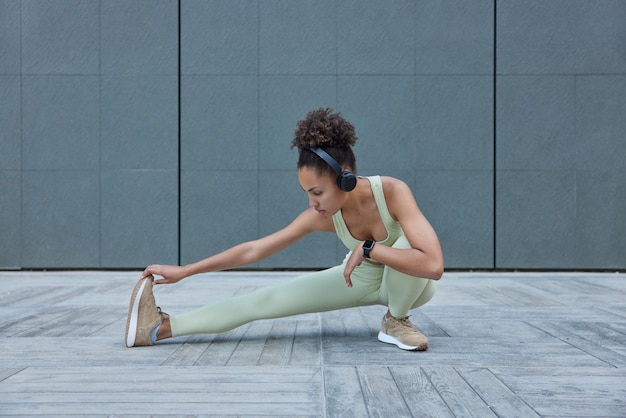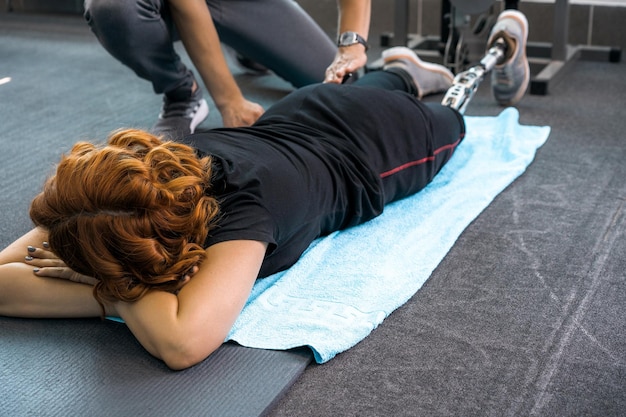Flexibility is one of the most overlooked yet essential components of overall fitness. Whether you're an athlete, a desk worker, or just someone looking to move better, improved flexibility can reduce injury risk, enhance performance, and boost daily comfort. But if you're stretching regularly and still not seeing results, you're likely making one or more common mistakes.
The good news? With the right approach—starting fast, staying consistent, and measuring progress weekly—you can overcome these roadblocks and see real improvements in weeks, not months.
Stretching cold muscles is not only ineffective—it can be dangerous. Cold muscles are less pliable and more prone to strain. Many people jump straight into deep stretches first thing in the morning or after sitting all day, expecting gains that never come.
✅ Solution: Always warm up for 5–10 minutes with light cardio—like brisk walking, jumping jacks, or dynamic movements—before static stretching. This increases blood flow and prepares your muscles for deeper, safer flexibility work.

Flexibility gains require consistency. Doing intense stretching once a week won’t cut it. Your muscles adapt slowly, and progress stalls without regular stimulus.
✅ Solution: Commit to short, daily sessions—even 10–15 minutes a day. Consistency beats duration. Use a habit tracker or calendar to build momentum and stay accountable.
If you're not tracking your flexibility, how do you know you're improving? Many people stretch without benchmarks, making it hard to stay motivated or adjust routines.
✅ Solution: Measure key markers weekly—like how far you can reach in a seated forward bend, your shoulder mobility, or hip flexor length. Take notes or photos to visualize progress. Small wins add up and keep you engaged.

Static stretching (holding a stretch) is valuable, but relying on it alone limits results. Muscles also need dynamic movement and neuromuscular control to become truly flexible and functional.
✅ Solution: Combine static stretches with dynamic stretches (like leg swings or arm circles) and active flexibility drills (like yoga flows or PNF stretching). This balanced approach improves both range of motion and control.
Flexibility isn’t about pain—it’s about controlled progress. Forcing a stretch triggers the stretch reflex, causing muscles to tighten up defensively, which slows improvement and increases injury risk.
✅ Solution: Use the "edge of discomfort" principle—stretch to the point of mild tension, not pain. Breathe deeply and hold for 20–30 seconds, allowing the muscle to gradually release.
Muscles need time and resources to adapt. Dehydration, poor sleep, and overtraining can all hinder flexibility gains by reducing tissue elasticity and slowing recovery.
✅ Solution: Stay hydrated, prioritize sleep, and include rest days. Consider foam rolling or light mobility work on recovery days to maintain circulation and reduce stiffness.

Random stretching won’t yield consistent results. Without a clear plan—targeting specific areas, using progressive techniques, and scheduling sessions—efforts become scattered and ineffective.
✅ Solution: Create a weekly flexibility plan. Include target zones (hips, hamstrings, shoulders), types of stretches, frequency, and weekly check-ins. Start fast with a simple routine, then refine based on results.
The key to unlocking flexibility isn’t complexity—it’s consistency and awareness. By avoiding these seven mistakes and adopting a smart, measurable approach, you’ll start seeing real changes in posture, movement, and comfort within weeks.
Remember: Flexibility is a skill, not just a physical trait. Train it with intention, track your progress, and respect your body’s limits. Over time, you’ll move better, feel better, and perform better—no matter your age or fitness level.
Start today. Stretch smarter. Track weekly. Win long-term.

Fitness

Fitness

Fitness

Fitness

Wellness

Wellness

Fitness

Fitness

Fitness

Fitness

Fitness

Health

Health

Fitness

Health

Health